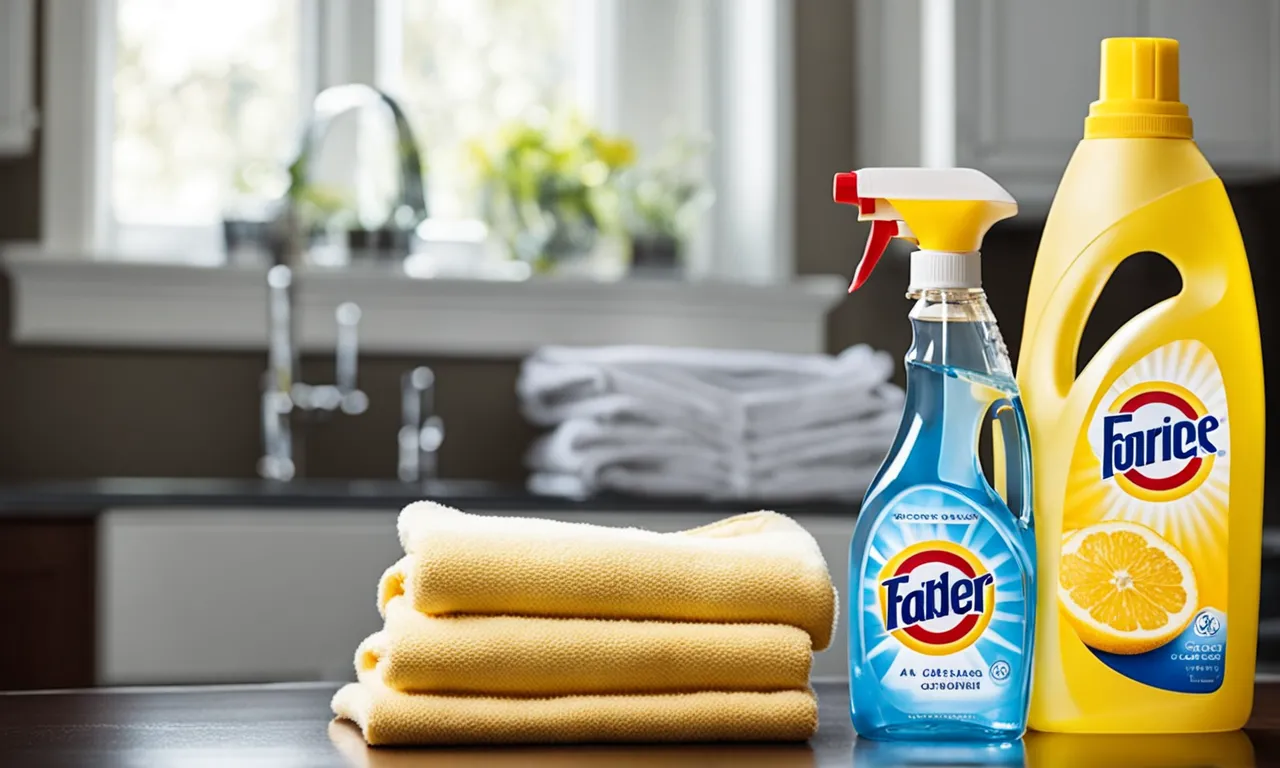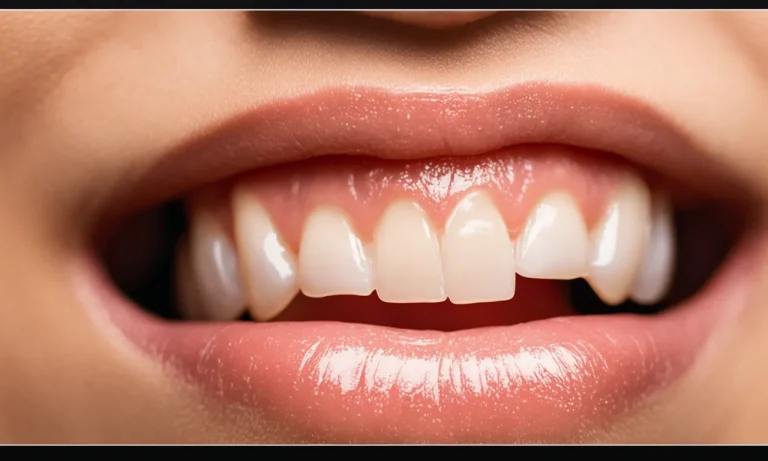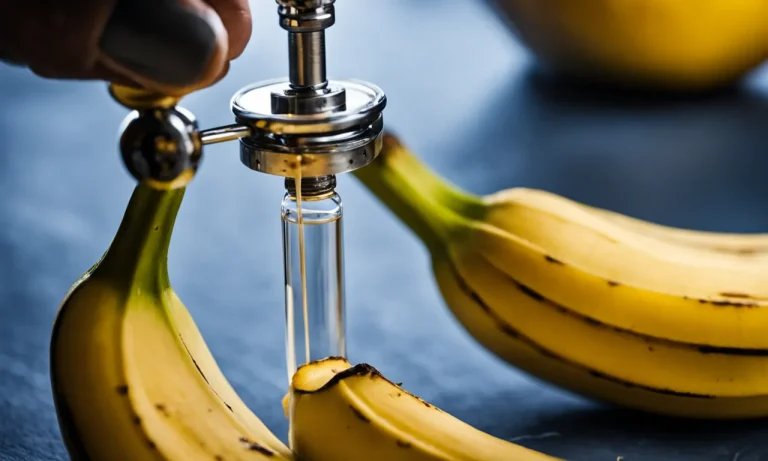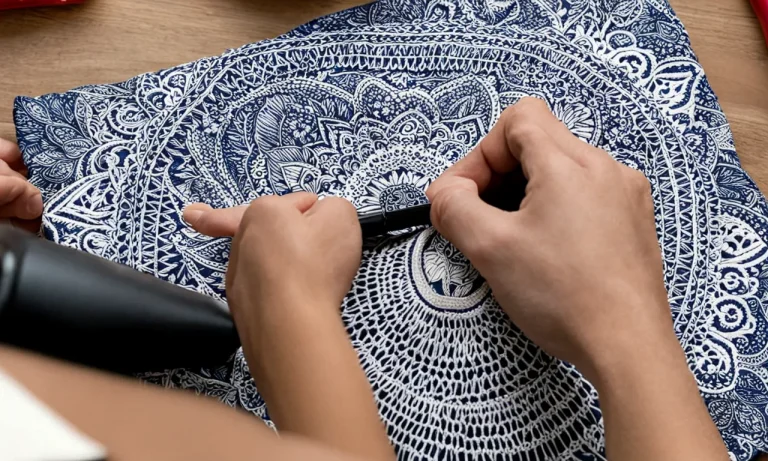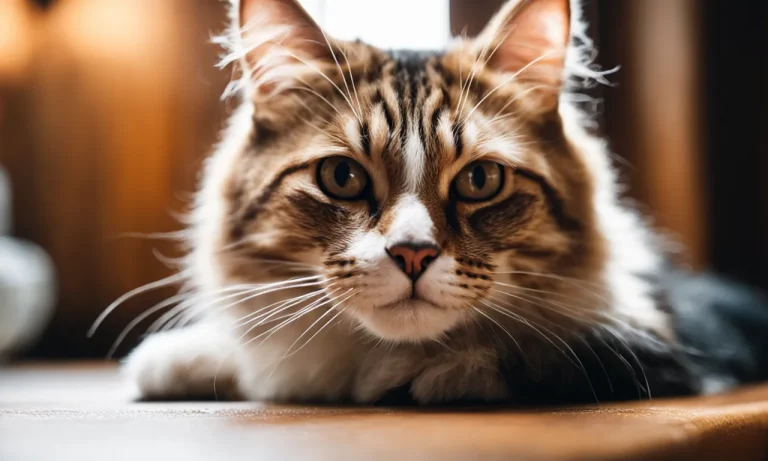How To Remove Fabric Softener Stains From Clothes, Towels, And Other Fabrics
If you’ve ever had those annoying blue or yellow stains on your clothes from fabric softener, you know how difficult they can be to remove. Fabric softener contains chemicals that bind to fabric and can leave unsightly discoloration.
If you’re short on time, here’s a quick answer to your question: soak the stained fabric in a mixture of dish soap and vinegar, then launder as usual. The acid in the vinegar will help break down the staining chemicals.
In this comprehensive guide, we’ll cover everything you need to know to get fabric softener stains out of any fabric. You’ll learn what causes these stains, how to prevent them, and techniques to lift stains from clothes, towels, sheets and other laundry.
What Causes Fabric Softener Stains
Fabric softeners are commonly used to add a pleasant scent and reduce static cling in laundry. However, they can sometimes leave behind unsightly stains on clothes, towels, and other fabrics. Understanding the causes of these stains can help you prevent and remove them effectively.
Ingredients in Fabric Softeners
Fabric softeners typically contain a variety of ingredients, including cationic surfactants, fragrance oils, and colorants. These ingredients work together to soften fabrics and impart a fresh scent. However, certain components in fabric softeners can contribute to stain formation.
One common ingredient found in fabric softeners is quaternary ammonium compounds (quats). Quats have a positive charge, which allows them to bind to negatively charged fabrics. While this binding action helps to soften the fabric, it can also result in stains if the softener is not properly diluted or evenly distributed during the rinse cycle.
How Fabric Softeners Cause Stains
Fabric softener stains can occur due to a variety of reasons:
- Overuse of Fabric Softener: Using too much fabric softener can lead to excessive build-up on clothes and fabrics, increasing the chances of stains.
- Improper Dispersion: If fabric softener is not properly diluted or evenly dispersed in the rinse cycle, it can concentrate in certain areas, resulting in stains.
- Undiluted Fabric Softener: Applying fabric softener directly to clothes without diluting it can cause concentrated spots that may leave stains.
- Reaction with Other Products: Fabric softeners can sometimes react with other laundry products, such as bleach or detergent, leading to stain formation.
It’s important to note that fabric softener stains may not be immediately visible. They can appear over time as the fabric is exposed to heat, light, or moisture. Therefore, it’s essential to take preventive measures and address any stains promptly.
If you’re looking for more information on fabric softener stains and how to remove them, reputable sources like Cleanipedia and Stain Removal 101 can provide further guidance.
Tips to Prevent Fabric Softener Stains
Fabric softener stains can be frustrating to deal with, but with a few simple tips, you can prevent them from happening in the first place. Here are some helpful suggestions:
Follow Directions on the Bottle
One of the most important tips to prevent fabric softener stains is to carefully read and follow the directions on the bottle. Each fabric softener brand may have specific instructions on how much to use and how to properly dilute it.
By following these instructions, you can avoid using too much fabric softener, which can lead to stains.
Avoid Overfilling
When using a washing machine or a fabric softener dispenser, it’s important to avoid overfilling. If you pour too much fabric softener into the dispenser or directly onto the clothes, it can leave behind residue that can cause stains.
Make sure to leave enough space for the fabric softener to properly mix with the water and not overflow.
Use Less Fabric Softener
Using less fabric softener than recommended can also help prevent stains. If you find that your clothes are still soft and static-free with a smaller amount of fabric softener, there’s no need to use the full recommended dose.
Experiment with smaller amounts to find the right balance for your laundry needs.
Switch to a Clear Fabric Softener
Some fabric softeners are clear, while others have a tint or color. If you’re concerned about fabric softener stains, consider switching to a clear fabric softener. Clear fabric softeners are less likely to leave behind visible stains on your clothes or towels.
Use Vinegar in the Wash
Vinegar can be a natural alternative to fabric softener and can help prevent fabric softener stains. Add a half cup of white vinegar to the rinse cycle of your washing machine to help soften your clothes and reduce static. Vinegar can also help remove any residue left behind by fabric softener.
Remember, prevention is key when it comes to fabric softener stains. By following these tips, you can keep your clothes, towels, and other fabrics stain-free and fresh-smelling!
How to Remove Existing Fabric Softener Stains
Re-wash with Detergent
If you notice fabric softener stains on your clothes, towels, or other fabrics, don’t panic. One of the simplest solutions is to re-wash the stained items using a regular detergent. Make sure to use the appropriate amount of detergent according to the load size.
This method can effectively remove mild fabric softener stains and restore the fabric’s original appearance.
Soak in Vinegar Water
Vinegar is known for its natural cleaning properties and can be used to remove fabric softener stains. Create a mixture of equal parts vinegar and water and soak the stained fabric in it for about 30 minutes. Then, wash the fabric as usual.
Vinegar helps break down the residue left by fabric softeners and eliminates the stains effectively.
Use Dish Soap
If the fabric softener stains are stubborn, you can try using dish soap. Apply a small amount of dish soap directly onto the stain and gently rub it in. Allow the soap to sit on the stain for a few minutes, and then wash the fabric in the washing machine.
Dish soap contains grease-cutting agents that can help remove the fabric softener stains.
Try Oxiclean
Oxiclean is a powerful stain remover that can be effective in removing fabric softener stains. Follow the instructions on the packaging to create a solution with water, and then soak the stained fabric in it for the recommended amount of time. After soaking, wash the fabric as usual.
Oxiclean can help break down and lift stubborn fabric softener stains.
Make a Baking Soda Paste
Baking soda is a versatile household ingredient that can be used to remove fabric softener stains. Create a paste by mixing baking soda with water until it forms a thick consistency. Apply the paste directly onto the stain and gently rub it in.
Let the paste sit on the stain for about 15 minutes, and then wash the fabric as usual. Baking soda helps absorb the fabric softener residue and eliminate the stain.
Use Lemon Juice
Lemon juice is a natural bleaching agent and can be effective in removing fabric softener stains. Squeeze fresh lemon juice onto the stained area and let it sit for about 10 minutes. Then, rinse the fabric with water and wash it as usual.
Lemon juice can help lighten the stain and restore the fabric’s color.
Try Hydrogen Peroxide
Hydrogen peroxide is another option for removing fabric softener stains. Apply a small amount of hydrogen peroxide directly onto the stain and let it sit for a few minutes. Rinse the fabric with water and wash it as usual. Hydrogen peroxide can help break down the stain and remove it effectively.
Use a Laundry Bar/Laundry Stain Remover
If all else fails, you can try using a laundry bar or a laundry stain remover specifically designed to tackle tough stains. Follow the instructions on the packaging and apply the product directly onto the fabric softener stain.
Allow it to sit for the recommended amount of time, and then wash the fabric as usual. These products are formulated to target and remove stubborn stains, including fabric softener stains.
Remember, it’s important to always check the fabric care label before attempting any stain removal method, and to test the solution on a small, inconspicuous area of the fabric first to ensure it does not cause any damage.
With the right approach and a little patience, you can successfully remove fabric softener stains and keep your clothes, towels, and other fabrics looking clean and fresh.
When to Call in a Professional
While many fabric softener stains can be effectively removed at home, there are some situations where it may be best to call in a professional. Here are a few scenarios where seeking professional help can be beneficial:
1. Stubborn stains
If you have tried multiple methods to remove the fabric softener stain and it still persists, it may be time to seek professional assistance. Professionals have access to specialized stain removal techniques and products that can effectively tackle even the toughest stains.
2. Delicate fabrics
When dealing with delicate fabrics such as silk or satin, it is important to exercise caution. These fabrics require special care and handling to avoid causing further damage. A professional cleaner with experience in handling delicate fabrics can ensure that the stain is removed without compromising the integrity of the fabric.
3. Expensive or sentimental items
If the fabric softener stain is on an expensive or sentimental item, it is understandable that you may be hesitant to attempt stain removal yourself. In such cases, it is wise to consult a professional who has the necessary expertise to handle valuable or sentimental items with care.
4. Lack of time or resources
If you are pressed for time or lack the necessary resources to effectively remove the stain, it can be beneficial to enlist the help of a professional cleaner. They have the expertise, equipment, and products to efficiently remove fabric softener stains, allowing you to focus on other tasks or priorities.
Remember, it is always a good idea to consult with a professional if you are unsure about the best course of action. They can provide guidance and advice tailored to your specific situation, ensuring the best possible outcome for your stained fabrics.
Conclusion
Fabric softener stains can be frustrating, but with the right techniques you can get your laundry looking fresh again. By understanding what causes the stains and trying removal methods like vinegar, dish soap and hydrogen peroxide, you can lift those blue and yellow discolorations.
If DIY efforts fail, consider calling in a professional cleaner for especially stubborn stains. With some patience and elbow grease, you can outsmart fabric softener stains and keep your linens looking their best.

